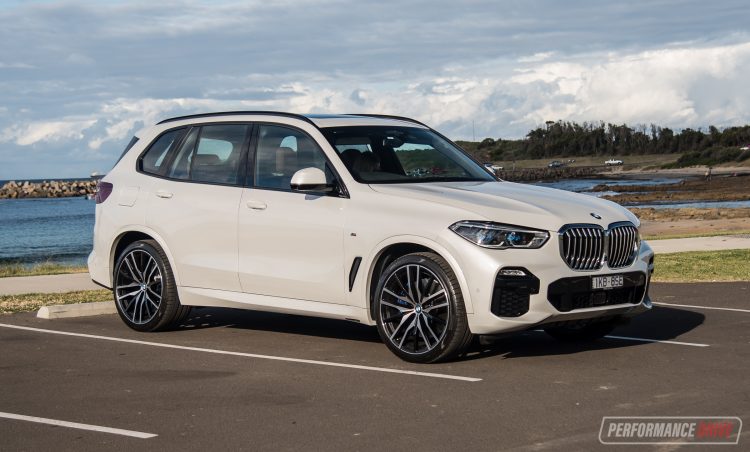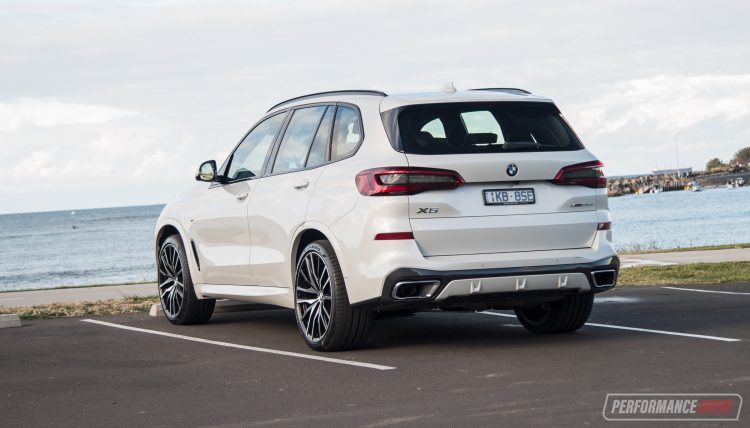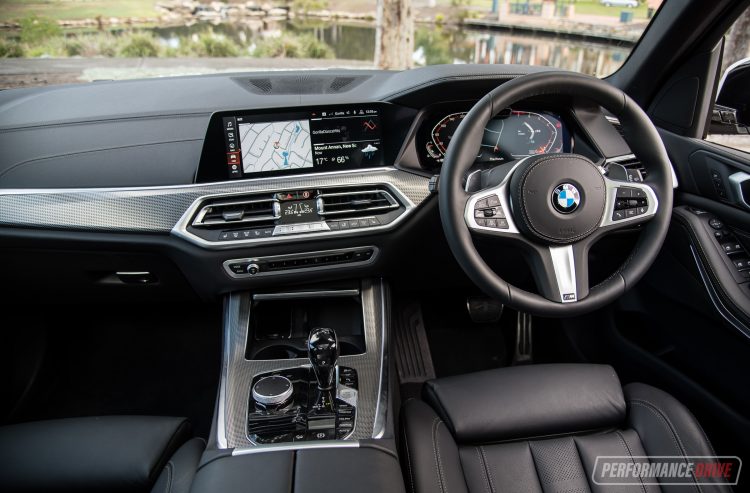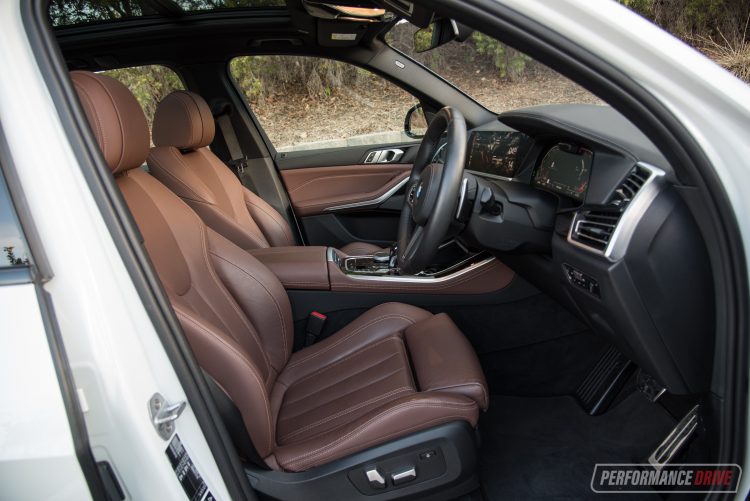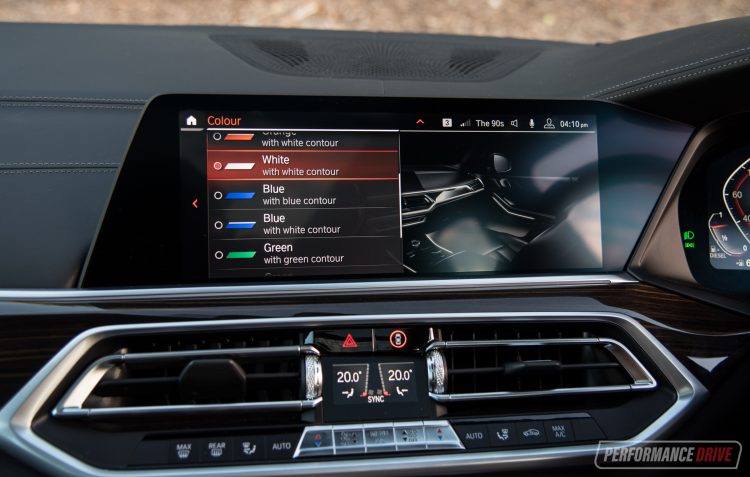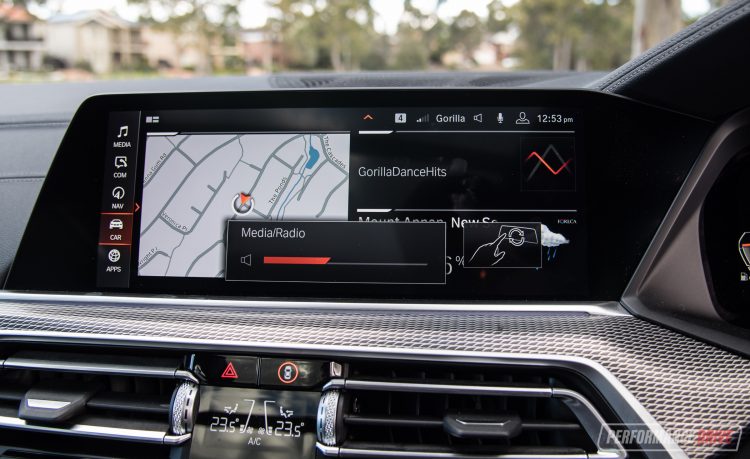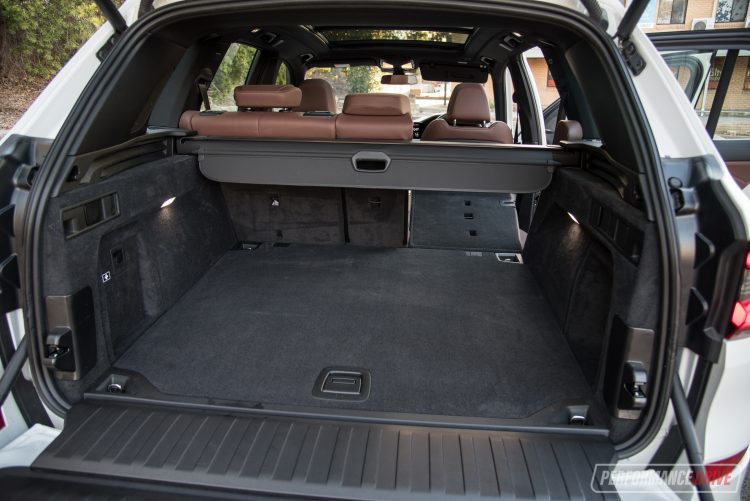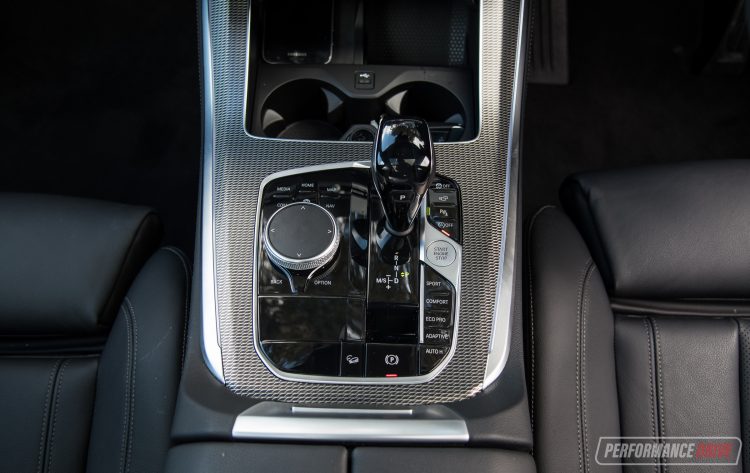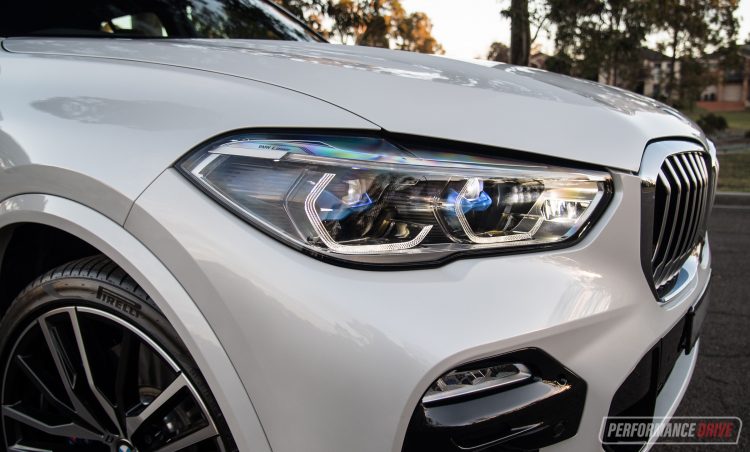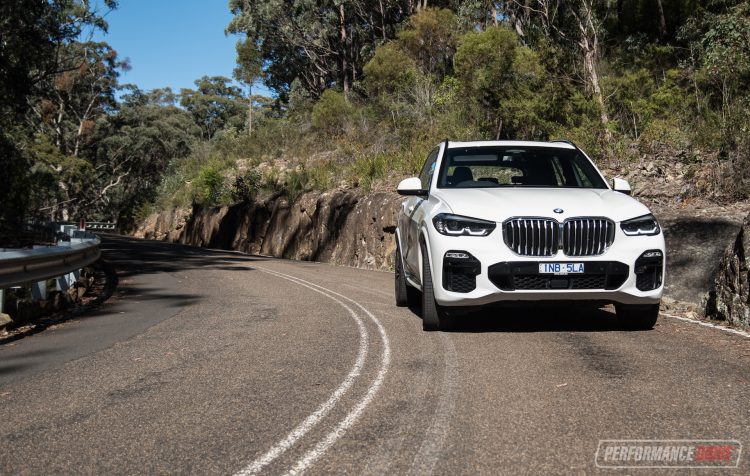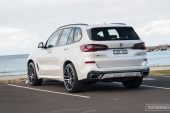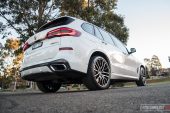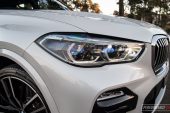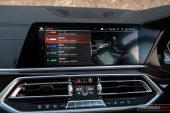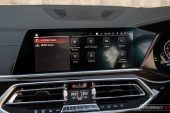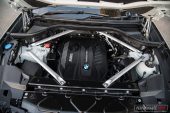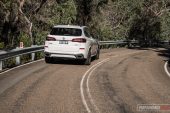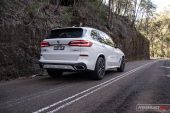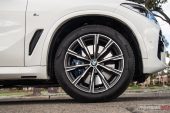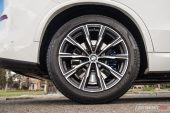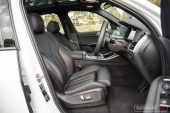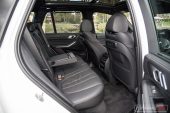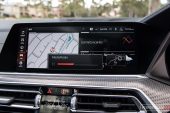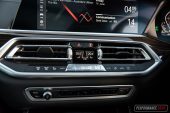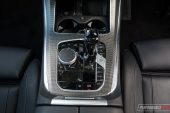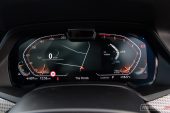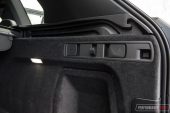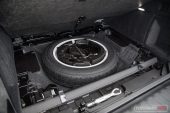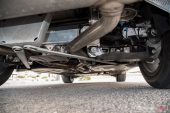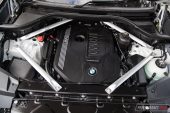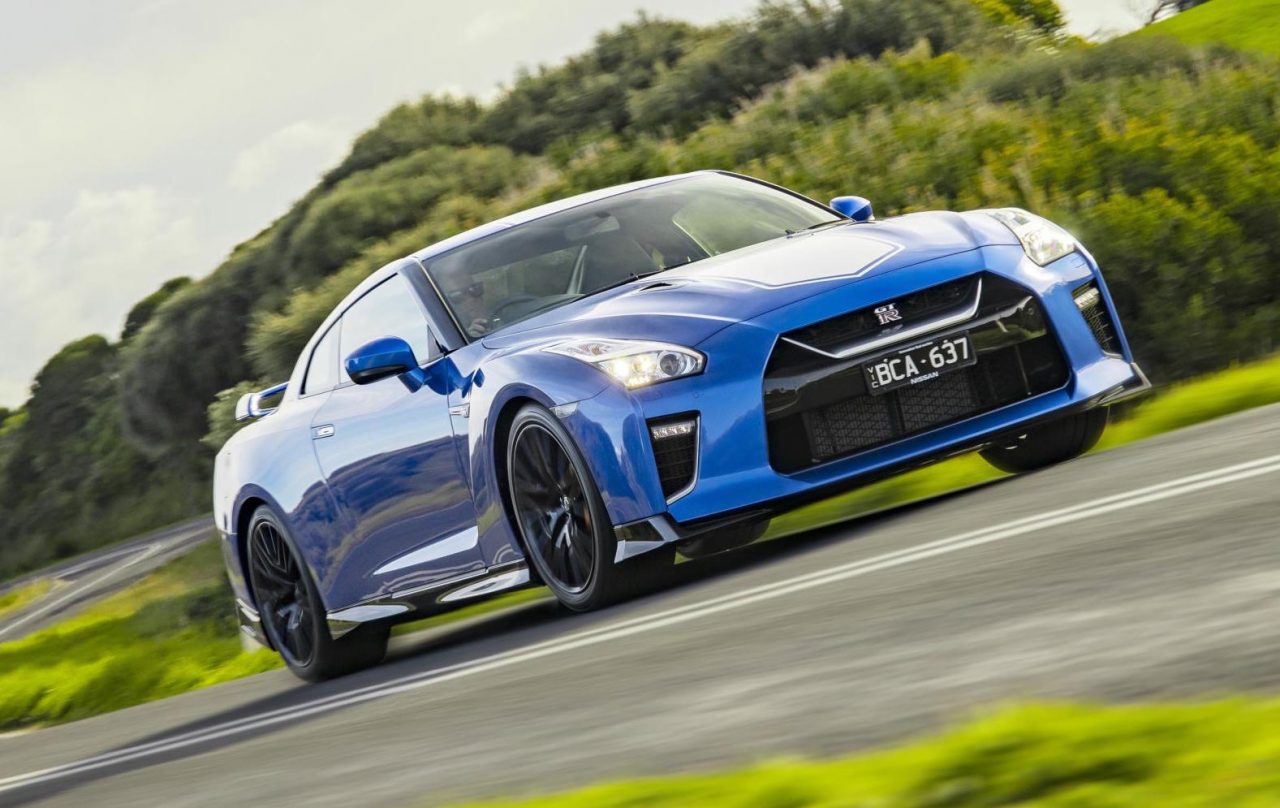Now in its fourth generation, the BMW X5 has matured nicely over the years thanks to a range of advanced technologies and efficiency-focused developments. But, the latest G05 model is also quite youthful and savvy thanks to comprehensive connectivity and some spirited new powertrain options.
In Australia buyers are offered a wide range of variants of the new model, spanning from the 25d, 30d, 45e hybrid, 40i petrol, M50d quad-turbo diesel, to the range-topping M50i twin-turbo V8 petrol. All models come with xDrive all-wheel drive and an eight-speed automatic transmission. It doesn’t matter what you desire, whether it’s pure efficiency, towing torque, clever emissions-free capability, or ultimate performance, the new range covers the widest market yet.
For this test we thought we’d try out two of the fundamental options; the 195kW/620Nm xDrive30d diesel and the 250kW/450Nm xDrive40i petrol. We’re not so much as going to compare them to find a winner, but more dissect them to find out which option suits you the best.
Both use a turbocharged 3.0-litre inline-six, which is a great point of difference compared with most rivals which use a V6 configuration. What’s the difference? An line-six layout is inherently smoother-running, with combustion taking place in alignment, vertically, and with a piston order running symmetrically. This is opposed to a V-configuration which sends combustion forces slightly sideways and with an imbalanced piston order (sometimes requiring a balance shaft). More on the engines later.
The new X5 is underpinned by BMW’s latest CLAR platform. The gist of it means the wheelbase is 42mm longer, and it’s 36mm longer overall. It’s also 66mm wider and 19mm taller than the old model. This means there’s more room inside. Fortunately for customers, the new platform and the new tech that fills it doesn’t translate to higher sticker prices. In fact the new xDrive30d is priced from $112,990, and that’s exactly the same price as the predecessor with the old 30d engine (190kW/560Nm). The xDrive40i is a new variant for Australia and is priced from $115,990 (all excluding on-roads). Both examples here feature the full M Sport pack which costs an additional $4000.
2019 BMW X5 xDrive30d – THE SPECS
[column width=”47%” padding=”6%”]Engine: 3.0-litre turbo-diesel inline six
Output: 195kW@4000rpm / 620Nm@2000-2500rpm
Transmission: Eight-speed auto
Drive type: All-wheel drive
Wheels: F: 20×9.0, 275/45 R: 20×10.5, 305/40 (22in as tested)
ANCAP: Five stars
Tare weight: 2052kg
Power-to-weight: 10.52:1 (kg:kW)
Official fuel economy: 7.2L/100km
Economy during test: 7.7L/100km
Fuel capacity/Type: 80L/Diesel[/column] [column width=”47%” padding=”0″]Power efficiency: 27.08kW:L/100km
0-60km/h: 2.75 seconds*
0-100km/h: 6.33 seconds*
60-110km/h: 4.62 seconds*
1/8 mile: 9.41 seconds at 122.8km/h*
1/4 mile: 14.69 seconds at 150.6km/h*
Max acceleration: 0.944g
100-0km/h braking: 3.00 seconds at 36.99 metres*
Max deceleration: -1.389g
Decibel at idle: 46*
Peak decibel at 60-100km/h: 76*
Priced from: $112,990[/column][end_columns]
2019 BMW X5 xDrive40i – THE SPECS
[column width=”47%” padding=”6%”]Engine: 3.0-litre turbo-petrol inline six
Output: 250kW@6500rpm / 450Nm@1500-2500rpm
Transmission: Eight-speed auto
Drive type: All-wheel drive
Wheels: F: 20×9.0, 275/45 R: 20×10.5, 305/40
ANCAP: Five stars
Tare weight: 2005kg
Power-to-weight: 8.02:1 (kg:kW)
Official fuel economy: 9.2L/100km
Economy during test: 9.6L/100km
Fuel capacity/Type: 83L/98 RON[/column] [column width=”47%” padding=”0″]Power efficiency: 27.17kW:L/100km
0-60km/h: 2.54 seconds*
0-100km/h: 5.45 seconds*
60-110km/h: 3.84 seconds*
1/8 mile: 8.92 seconds at 129.9km/h*
1/4 mile: 13.80 seconds at 163.6km/h*
Max acceleration: 0.893g
100-0km/h braking: 2.97 seconds at 36.14 metres*
Max deceleration: -1.340g
Decibel at idle: 44*
Peak decibel at 60-100km/h: 82*
Priced from: $115,990[/column][end_columns]
* Figures as tested by PerformanceDrive on the day. Factory claims may be different
2019 BMW X5 review – xDrive30d & xDrive40i – THE PACKAGE
So, with that new CLAR platform the G05 X5 is stiffer and more dynamic than ever before. But more importantly for the passengers, it helps to expand the cabin space – not that the old one was confined inside. Headroom isn’t going to be a problem for most drivers, and the lovely M Sport seats provide electric adjustment for every which way so you can find that perfect driving position. There’s even adjustable side bolsters so it’s like you’re constantly receiving a big hug.
BMW has really moved forward with its infotainment systems and overall man-and-machine interface. The design in which this is all now showcased is also much more modern. BMW is one of those family businesses that doesn’t like to make big and drastic changes in terms of brand persona and design (the company has been mostly owned by one family since the 1950s – look up the Quandt family). As such, some traditional aspects remain inside. The eight preset buttons are still available on the dash, allowing you to program various functions into one button, such as a radio station or even ‘call mum’. However, there’s also some healthy evolution in here.
Up on the dash is a huge 12.3-inch wide-screen display which offers touch-screen functionality, with BMW’s iDrive hand controller down on the centre console for easy navigation. It runs the latest 7.0 operating software, which includes a clear menu system, although not quite as clear as the previous tile-like setup in our opinion.
There is a lot more depth to the system though, so you can manage a whole heap of different settings if you want to. For example, you can change the ambient lighting colour, set how long you want the headlights to stay on after you get home, and even set up which camera views you’d like displayed when parking.
Connectivity is significantly improved over the predecessor. The X5 comes with three years subscription to BMW’s Connected Package Professional, which includes Remote Services such as remote vehicle lookup (showing a live image from the on-board cameras), as well as online news and weather, and one year subscription to Apple CarPlay.
These test cars also showcase the optional gesture control system. It is a bit gimmicky but very cool nonetheless. You basically wave your finger around in front of the dash fascia to prompt various commands, such as control volume or skip or repeat tracks.
As for rear seat accommodation, you won’t be wanting for more space. The legroom and headroom is plentiful, and as standard the X5 comes with semi-climate-control with temperature adjustment. The 30d featured here (brown interior) presents the optional four-zone climate control pack ($900), which offers full control for each corner of the cabin.
There’s also charging ports and a flip-down armrest with cup holders from the middle seat backrest. It’s not widely known but the X5 is available with a third-row seat option ($3700) as well, making it suitable for a big family. We haven’t ever seen the third-row seat option so we can’t comment on the amount of space that’s offered.
Boot space is rated at 645 litres in the default configuration, and is accessible by a new horizontally-split tailgate system that’s power operated. There are handy tie-down hooks and a pocket in the side for securing smaller items, and there’s pull-tabs to flip down the rear seats from the boot area. Once flipped down, the boot volume grows to 1860L. Under the boot floor is a space-saver spare wheel option.
Having the two different variants here is great because we get to show you some of the trim packs that are available. The 40i features the conservative black leather interior with aluminium ‘Tetragon’ highlights. Over in the 30d is the coffee leather no-cost option paired with fine wood trim. We really like the coffee theme. It brightens up the cabin yet the leather is dark enough to hide light wear and grim.
2019 BMW X5 review – xDrive30d & xDrive40i – THE DRIVE
It might seem like an intimidating vehicle, the X5. But in reality it’s very friendly and easy to drive. Visibility is great, with a clean and uncluttered view ahead, and a neatly-positioned dashboard and steering column providing a good sense of control and confidence. At 4922mm long, it is a big car. It’s just over two metres wide, too (2004mm). This means it does fill shopping centre carparks. But it’s not difficult to manoeuvre into a space thanks to the perched-up seating position and intuitive feel.
Ride comfort around town is taut and responsive yet comfortable and relaxing. There is an air suspension option available which would no doubt enhance comfort to pampering levels. With the M Sport pack you get adaptive dampers so you can find a setting that’s suitable for you.
There’s also the ability for a custom setting, accessed by the Individual mode, that allows you to mix and match the various options for throttle sensitivity and ride settings and so on. It is a very versatile vehicle in that regard, and completely suitable for everything from the daily grind, to an evening out or a weekend getaway, or a blast in the mountains.
We found the ride to be a bit firm in the 30d, primarily because this example features the optional 22-inch alloy wheels with very low-profile tyres. We also encountered some mild tram-lining in the 30d, likely because of the larger wheels as well. Despite not presenting the wow factor of the larger wheels, we like the standard 20s (presented here on the 40i) more as they seem to offer a nicer ride and more consistent steering feel. In saying that, the 20s do look rather small for the big X5.
At the heart of these two is an inline-six engine. BMW is renowned for its inline-six engines, and in fact the first ever product it made as a company was a straight-six known as the BMW IIIa. It was designed for aircraft back in 1917, and the configuration was widely acclaimed for its optimum balance.
Back then the German aviation authorities dictated what engines were called, under what was known as IdFlieg’s Class. For engines producing 100-120hp, they had to use the Roman numeral I. For engines that produced 120-150hp, they adopted II. And then the high-output units were classed III. The BMW engine produced 200hp (150kW), which was huge for its day, hence the III in its name. What’s the point of this history lesson? Well, BMW has vast experience in building inline sixes, and it shows with these two.
The 30d unit here is an evolved version of the previous 30d. It now produces 195kW at 4000rpm, and a hefty 620Nm between 2000rpm and 2500rpm. Out on the road it is very smooth and relatively quiet for a diesel, with a faint, deep hum maintained at highway speeds. We especially like the low-end pickup, which really forces you into your seat even with light throttle. This engine is well-matched to the ZF-sourced eight-speed auto as well.
Unlike some rivals, the transmission doesn’t immediately jump into the highest gears possible for the sake of fuel savings. Instead, it sits in a happy medium and never feels hesitant or in the wrong gear. Rolling into side streets or around roundabouts, the transmission will anticipate the exit and seamlessly change down for you, if needed. If not, it will rely on the vast reserves of torque to pull you out from the corner.
Moving over into the 40i. BMW offers various forms of this ‘B58’ 3.0-litre turbo-petrol unit. There’s the 265kW/500Nm version that powers the X3/X4 M40i. There’s also the 250kW/500Nm version seen in the Z4 M40i (and Toyota Supra). But for some reason the version in this produces only 450Nm, available between 1500-2500rpm. We think the missing 50Nm would really come in handy, especially for the big and heavy X5 (40i: 2005kg, 30d: 2052kg).
As a result, the 40i can sometimes lack low-end grunt. You need to push the engine and really let it rev to experience its full potential. In the day-to-day scenarios mentioned above, such as turning into side streets, the transmission will change down earlier than in the 30d to make up for it. Which is nice.
You might expect the 40i to be quicker than the 30d, and you’d be right. A higher power output usually results in superior acceleration and top end. However, in the real world, when you’re not necessarily calling for maximum, full-throttle power, the diesel can be just as brisk. You can use that torque to your advantage in general traffic situations and in regular stop-start conditions. For example, if you raced these two but you were only allowed to use 50 per cent throttle, the 30d would win. It offers effortless performance and in that sense could be regarded as the more luxurious option.
In the end though the 40i is the option for performance fans. Of course. It’s a beautiful engine. Using our Vbox Sport we clocked a best 0-100km/h run in just 5.45 seconds in the 40i, pretty much matching BMW’s claim of 5.5 seconds. In the 30d, the best we achieved was 6.33 seconds, bettering the official claim of 6.5 seconds. But as we said, the 30d does its best work in a more relaxed manner, while the 40i loves to rev and get excited. And it produces a beautiful inline-six soundtrack (take a listen in the video below).
The xDrive all-wheel drive system is set up to offer a rear-biased power delivery in both models, for an enthusiast-focused driving character. Going for the M Sport pack also adds in a differential lock for the rear axle. It’s capable of redirecting up to 1500Nm of wheel torque to the opposite side for optimum traction. This also helps to pivot the SUV around corners under power. And you can feel it. The rear-biased delivery helps the X5 squat and pounce from corners, especially lower-speed bends when applying generous throttle on exit.
Keeping in mind the engine characters mentioned above, the 30d is best left in higher gears for maximum fun on spirited roads. The low-down surge impressively heaves the X5 from corner to corner. And although you can rev the engine right out to near 5000rpm if you want to – and it’s happy to do so – we found it more rewarding to upshift early or let it upshift in D automatically and ride the wave of torque. In the 40i, this character is the opposite. Grab the paddle shifters and feel free to downshift as often as you like; this beast loves to sing. You can let it wind right out to near 7000rpm. Keep it singing and the X5 is a monster up or down a mountain pass. Quite a contrasting character for such a large luxury SUV.
In either engine configuration, the X5 handles far better than it ought to. We enjoyed the old model, but BMW has clearly moved the benchmark even higher for this new version. There’s virtually no body roll at all, and with (at minimum) 275 tyres on the front and 305 tyres on the rear, the grip threshold is enormous. If you can get a squeal from the tyres, you’re doing well. During our test on our usual tight and twisty mountain route, we simply couldn’t find any understeer or oversteer. Its complete neutrality is unbelievable. And these aren’t even the performance models, although they do feature the M Sport pack as mentioned.
As for fuel economy, the 30d offers an official average of 7.2L/100km and we averaged 7.7L/100km during our week in mixed conditions. The 40i is stamped with a rating of 9.2L/100km and we averaged 9.6L/100km in similar conditions. With an 80L tank, the diesel offers a theoretical average range of 1111km, while the 83L tank in the 40i translates to an on-paper range of 902km.
2019 BMW X5 review – xDrive30d & xDrive40i – THE VIDEO
2019 BMW X5 review – xDrive30d & xDrive40i – THE VERDICT
The new X5 is a brilliant machine. It offers the company’s latest technologies and all models come impressively equipped as standard. However, there are some very expensive options, and some of which should probably come as standard for a $100k-plus vehicle. The handling and overall driving dynamics remain at the top of the mainstream luxury class in our opinion, and there are enough engine options to suit a wide variety of buyer types. Despite an all-new platform and loads more features and technologies, prices remain pretty much unchanged from the previous model. This is not often seen with all-new generation vehicles.
As for whether to go for the 30d or 40i? It depends on your priorities. There’s no escaping the enticement of that glorious-sounding inline-six in the 40i. Its performance is also very rewarding, although you do need to give it a proper tickle. However, it does consume more fuel than the 30d. In those respects, the 30d is more relaxing to drive because the engine delivers its party piece low down in engine revs. And this is where most people in this segment will spend most of their time. For that reason, and it’s hard for us to say this, we like the 30d more overall. It seems the better fit for this style of vehicle. Either way though, you won’t be disappointed.
[column width=”47%” padding=”6%”]PROS:
– New CLAR platform; handling defies physics
– Generously equipped with no price hike over predecessor
– 40i sounds so good
– 30d offers effortless low-down grunt and good fuel economy
– Comprehensive and user-friendly wide-screen infotainment system
[/column] [column width=”47%” padding=”0″]CONS:
– 40i requires high revs; doesn’t quite suit large SUV character
– Some very expensive options that should be standard
– Looks too much like the cheaper X3 and even X1?[/column][end_columns]
As always, if you’re thinking about buying a new car don’t forget to click here to speak with our car buying specialists.
